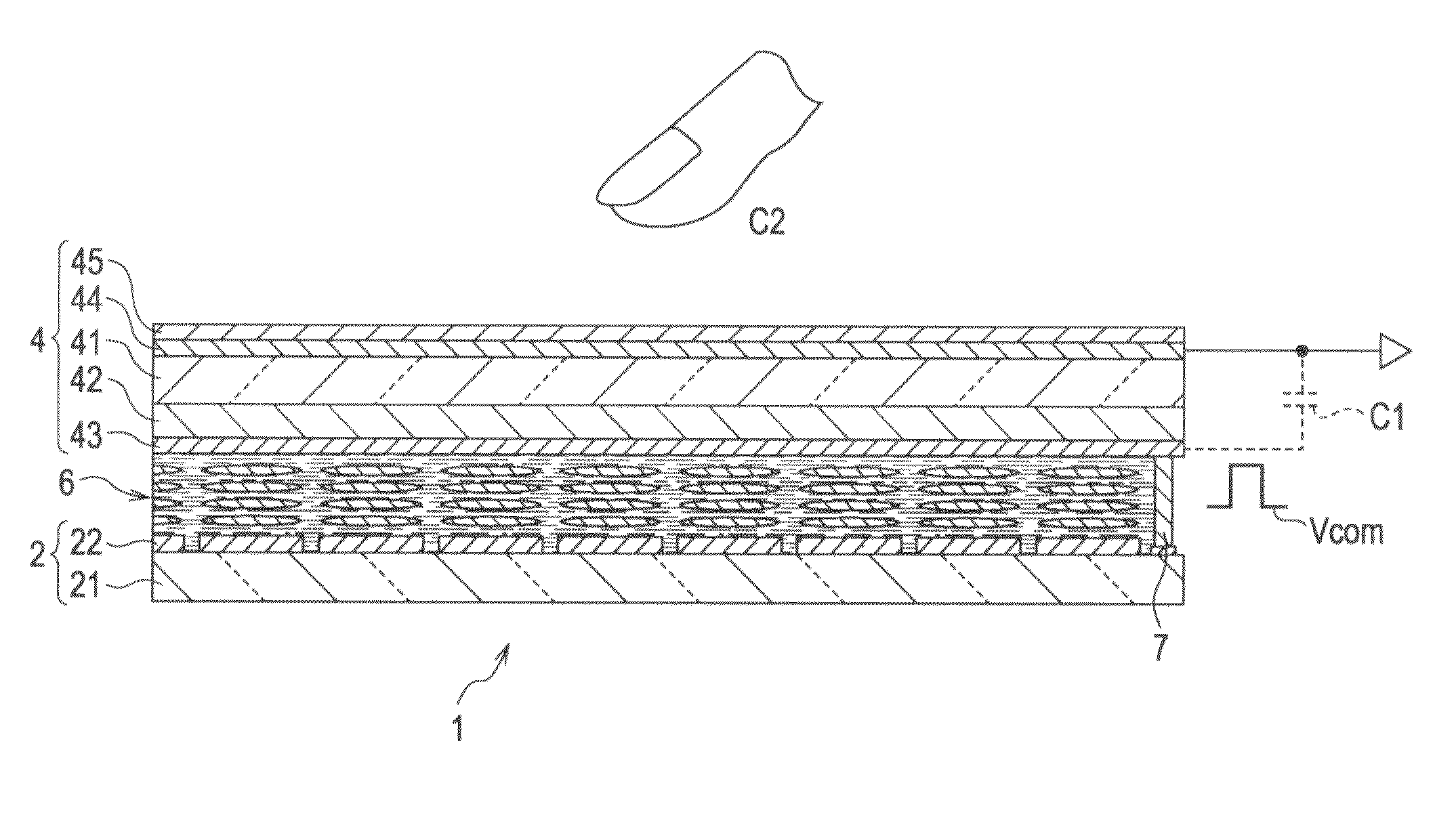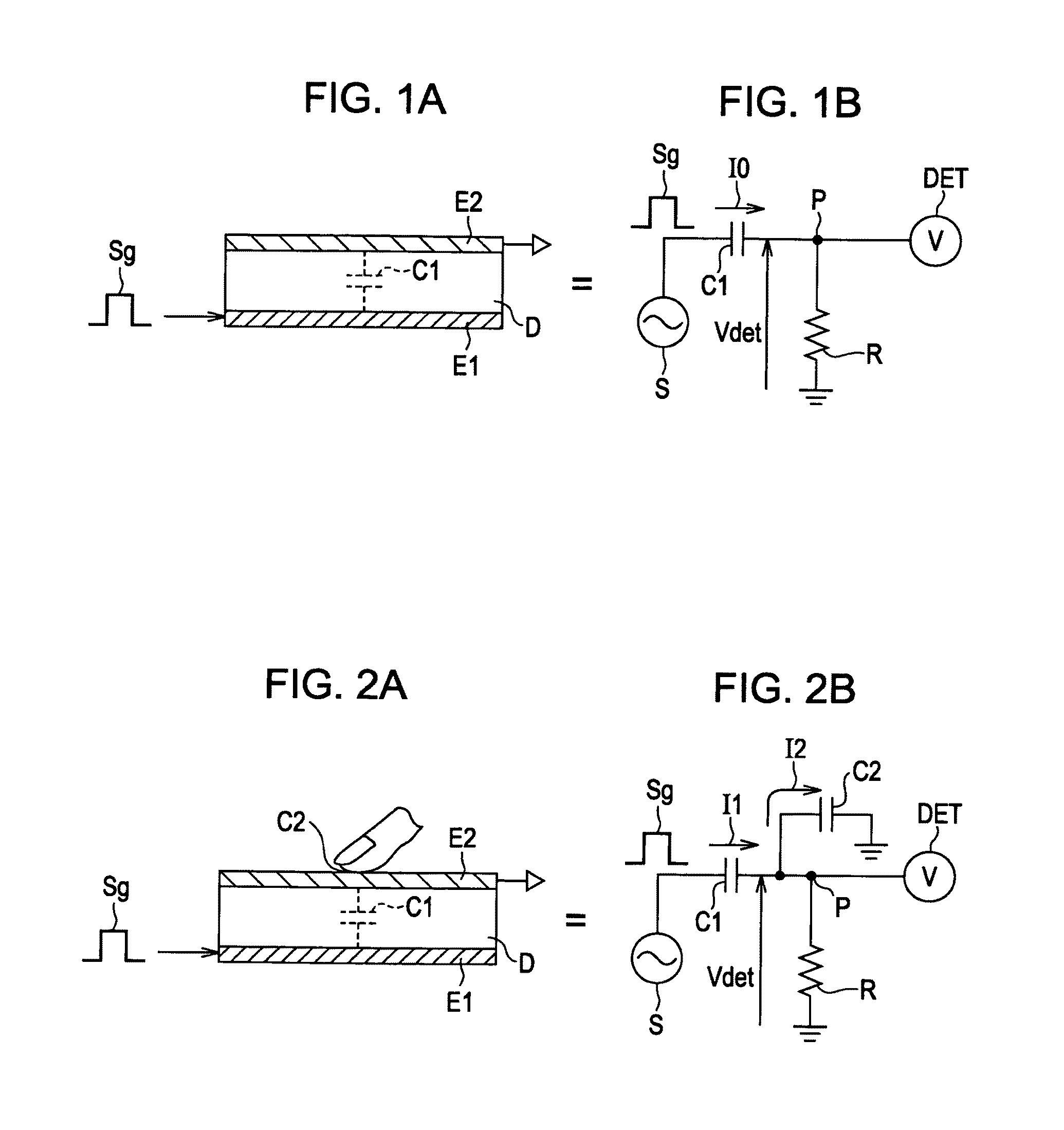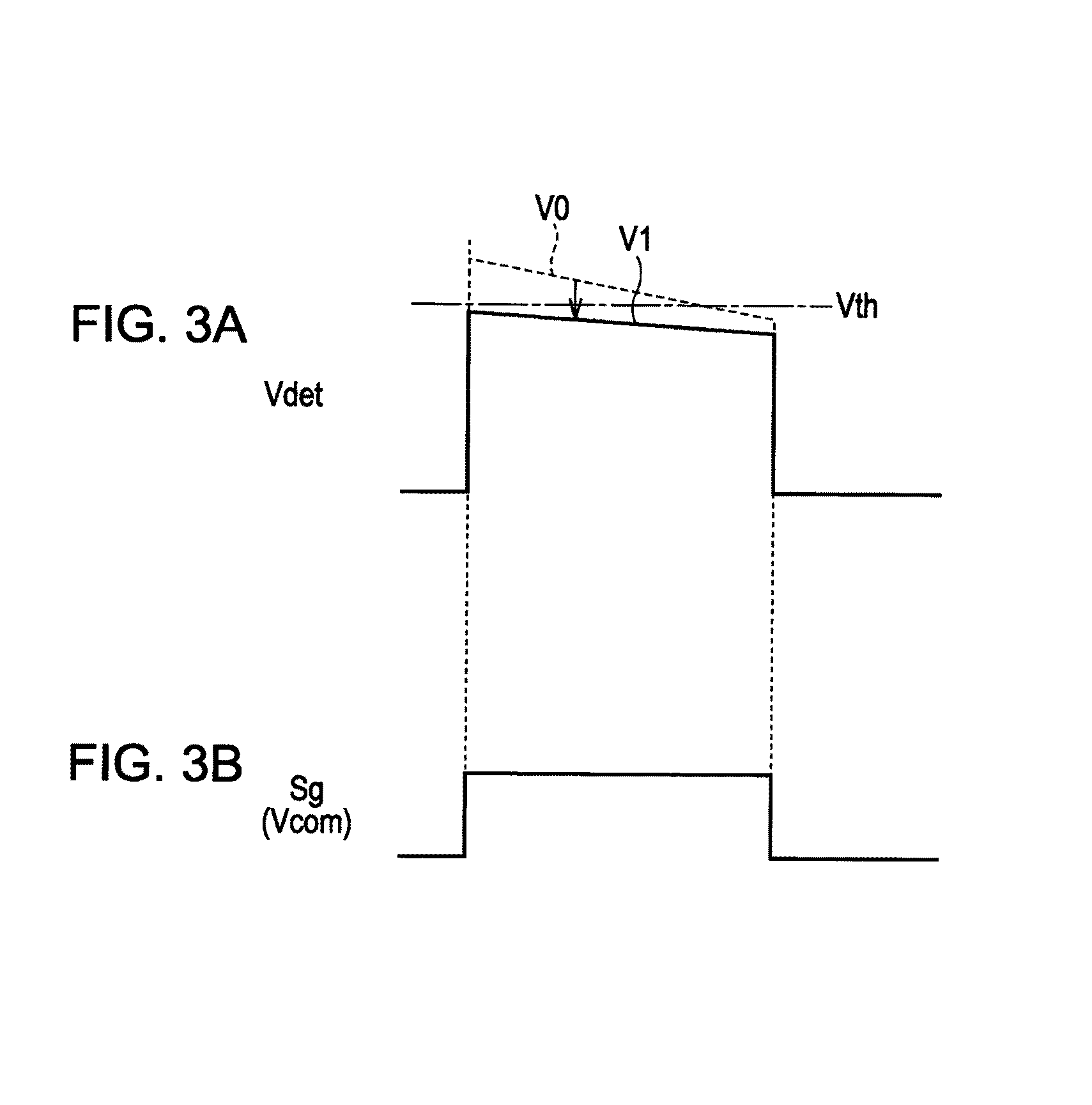Touch sensor, display device, and electronic apparatus
a display device and touch sensor technology, applied in the field of touch sensor, display device, electronic apparatus, can solve the problems of limiting the location where the conductive film can be disposed, the inability to dispose of the conductive film in a deeper portion of the liquid crystal, and the difficulty of using such a liquid crystal device display element for mobile apparatus applications, etc., to achieve the effect of reducing the influence of nois
- Summary
- Abstract
- Description
- Claims
- Application Information
AI Technical Summary
Benefits of technology
Problems solved by technology
Method used
Image
Examples
first embodiment (
1. First Embodiment (an example of internal noise removal method using two drive lines of different widths)
second embodiment (
2. Second Embodiment (an example using a liquid crystal element of a transverse electric field mode as a display element)
3. Applications (applications of a display device with a touch sensor to an electronic apparatus)
4. Other Modifications
[0049]First, referring to FIGS. 1A to 3B, a description will be given of the basic principle of a touch detection system in a display device with a touch sensor according to an embodiment of the present invention. This touch detection system is to be implemented as a capacitive touch sensor. For example, as shown in FIG. 1A, a capacitor is formed by using a pair of electrodes (a drive electrode E1 and a detection electrode E2) opposed to each other with a dielectric D therebetween. This structure is represented as an equivalent circuit shown in FIG. 1B. A capacitor C1 is formed by the drive electrode E1, the detection electrode E2, and the dielectric D. One end of the capacitor C1 is connected to an AC signal source (drive signal source) S, and th...
first embodiment
1. First Embodiment
Example of Configuration of Display Device 1
[0052]FIG. 4 shows the cross-sectional structure of the main portion of a display device 1 with a touch sensor according to a first embodiment of the present invention. In the display device 1, a capacitive touch sensor is formed by using a liquid crystal display element as a display element, and sharing the use of part (common electrode 43 described later) of electrodes originally provided to this liquid crystal display element and a display drive signal (common drive signal Vcom described later).
[0053]As shown in FIG. 4, the display device 1 includes a pixel substrate 2, a counter substrate 4 opposed to the pixel substrate 2, and a liquid crystal layer 6 inserted between the pixel substrate 2 and the counter substrate 4.
[0054]The pixel substrate 2 has a TFT substrate 21 as a circuit board, and a plurality of pixel electrodes 22 disposed in matrix on the TFT substrate 21. In addition to display drivers and TFTs (thin fi...
PUM
 Login to View More
Login to View More Abstract
Description
Claims
Application Information
 Login to View More
Login to View More - R&D
- Intellectual Property
- Life Sciences
- Materials
- Tech Scout
- Unparalleled Data Quality
- Higher Quality Content
- 60% Fewer Hallucinations
Browse by: Latest US Patents, China's latest patents, Technical Efficacy Thesaurus, Application Domain, Technology Topic, Popular Technical Reports.
© 2025 PatSnap. All rights reserved.Legal|Privacy policy|Modern Slavery Act Transparency Statement|Sitemap|About US| Contact US: help@patsnap.com



